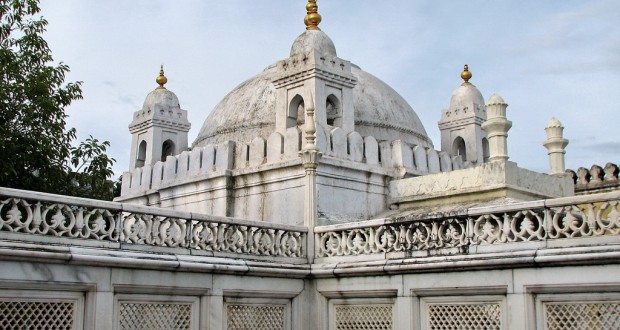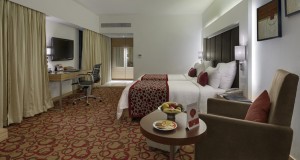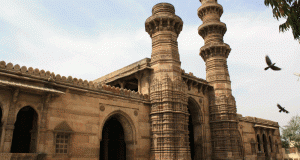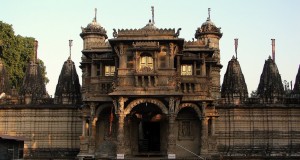 Make Aurangabad your base on this route—food, accommodation and tourist facilities are all best here. Travel out to Ellora and Ajanta on (good) one-day conducted tours, and leave a day spare to pick up some shopping bargains in Aurangabad itself.
Make Aurangabad your base on this route—food, accommodation and tourist facilities are all best here. Travel out to Ellora and Ajanta on (good) one-day conducted tours, and leave a day spare to pick up some shopping bargains in Aurangabad itself.
Aurangabad Caves
There are 10 of these-6 in the western group, 4 in the eastern group— and they are all Buddhist excavations of the 3rd to 7th centuries AD. Little patronised by tourists owing to their hot, isolated situation 3 km (2 miles) out of town, plus the fact they were never completed), they compare favourably with the more popular caves of Ellora and Ajanta, and serve as a useful introduction to them.Getting to the caves is best by auto-rickshaw—a bumpy 20-minute Rs10-15 journey across the arid, exposed desert plateau. Unless you’re prepared to pay a stiff ‘ waiting charge’, it’s best to walk back—a very pleasant stroll. Aurangabad’s caves are hacked into a high hillside rock-cleft, and offer spectacular views down over the Deccan plains. Ask to be  dropped at the Western Group (Caves .-10), where there is usually a guide (an old boy with an ‘illuminating’ mirror) waiting. Start with a climb up the walkway leading off to the right. This takes you up to Cave 10, the last one to be worked on and the most incomplete (Buddhism was well on the way out by the 7th century). It is of interest only as an illustration of how each cave began its life—as a large chamber of rough-hewn pillars supporting a low rock-cut ceiling. All the sculptures came later.
dropped at the Western Group (Caves .-10), where there is usually a guide (an old boy with an ‘illuminating’ mirror) waiting. Start with a climb up the walkway leading off to the right. This takes you up to Cave 10, the last one to be worked on and the most incomplete (Buddhism was well on the way out by the 7th century). It is of interest only as an illustration of how each cave began its life—as a large chamber of rough-hewn pillars supporting a low rock-cut ceiling. All the sculptures came later.
Cave 9 features a large Buddha image (left-hand chamber), surrounded by arge-breasted women, cobra-mantled attendants and fat, dissolute bodhisattvas near-Buddhas)—all indicative of Buddhism’s later period of decline. But the carvings are superb.
Cave 8 is just a hole in the rock. Pass on to Cave 7, the finest example of the whole group. This has the giant figure depicting Siddhartha as a near-Buddha on his way 😮 enlightenment, praying for deliverance from eight fears—fire, sword, chains, shipwreck, lions, snakes, mad elephants and the demon of death. The theme of seven’, recurrent throughout this cave, is most notable in the central shrine, with its seven handmaidens and seven bodhisattvas ranged round the large Buddha figure.
chains, shipwreck, lions, snakes, mad elephants and the demon of death. The theme of seven’, recurrent throughout this cave, is most notable in the central shrine, with its seven handmaidens and seven bodhisattvas ranged round the large Buddha figure.
Cave 6 is a real curiosity: a mixed assortment of Hindu and Buddhist sculptures. The gradual reabsorption of Buddhism into mainstream Hinduism is here reflected by the sole Buddha figure (right) supporting elephant-headed Ganesh (centre) and seven other Hindu deities, including Shiva (left). The sculptures of women are notable for their ornamentation and exotic hairdos. From the cave entrance, enjoy superb views over the surrounding plains.
Out of the western caves, it’s a 20-minute walk right round to the other side of the hill. Here, at the top of a crumbling stone stairway, you’ll find the Eastern Group (Caves 1-4). To appreciate most fully, start at the far end with Cave 1. This is incomplete, but has beautiful carvings (lotus designs) on its pillars, also imposing ‘guardians’ (bearing studded clubs) flanking the two humble Buddha figures in the side shrines. This cave also gives fine views down over the plateau. Cave 2 has an army of exquisitely carved mini-Buddhas (each with two mini-bodyguards) set into the enclosing wall running round the main shrine. Within the shrine is a massive Buddha attended by supplicant 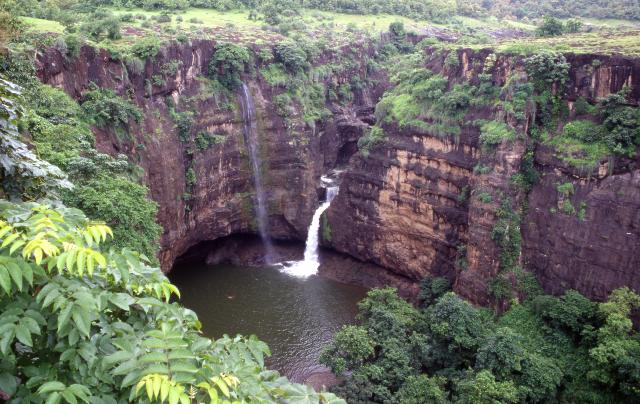 spirits, animals and lesser deities.
spirits, animals and lesser deities.
The exterior simplicity of Cave 3—a square structure supported by 12 highly ornate columns—belies its inner charm and beauty. Within is an interesting series of sculptures depicting scenes from one of the jatakas (Buddhist fables); also the finest Buddha image of the whole Aurangabad group, attended by a large retinue of devotees kneeling in prayer. The walls are covered with figures of women (the whole group has a distinctly female emphasis), scantily clad yet heavily bejewelled.
Cave 4 is the only chaitya (temple) of the group, all the others being viharas (monasteries). A silver casket stupa containing Buddhist relics sits beneath an awesome ribbed ceiling, carved in the style of a gothic church. Outside the temple entrance a stone Buddha sits in his chair, enjoying the sun. Cave 5, the last in this group, is disappointing: the principal sculptures have all been plastered over. The walk down to Aurangabad from the bottom of the cave steps is neither as long nor as daunting as it might first seem. One gets a real sense of desert isolation and timelessness in the 30-minute walk down over the flat, stark plains to the gleaming dome of the Bibi-ka-Maqbara at the northern end of town. From here, you can hire a Rs5 rickshaw back into Aurangabad centre, for a well-earned rest.

